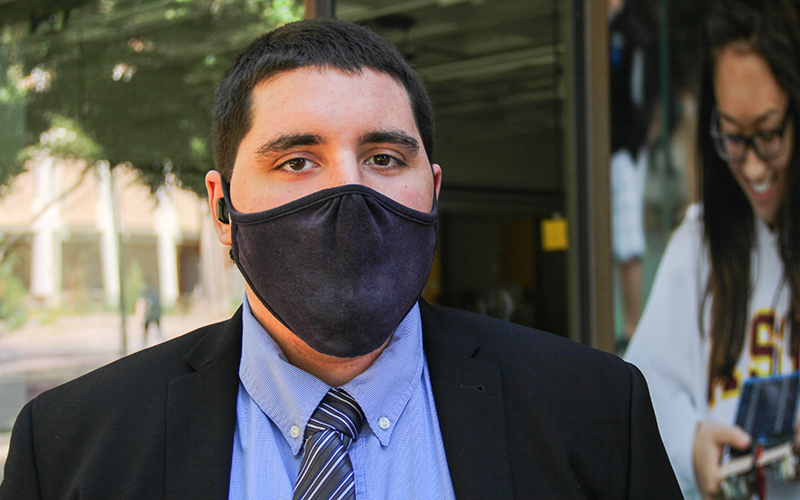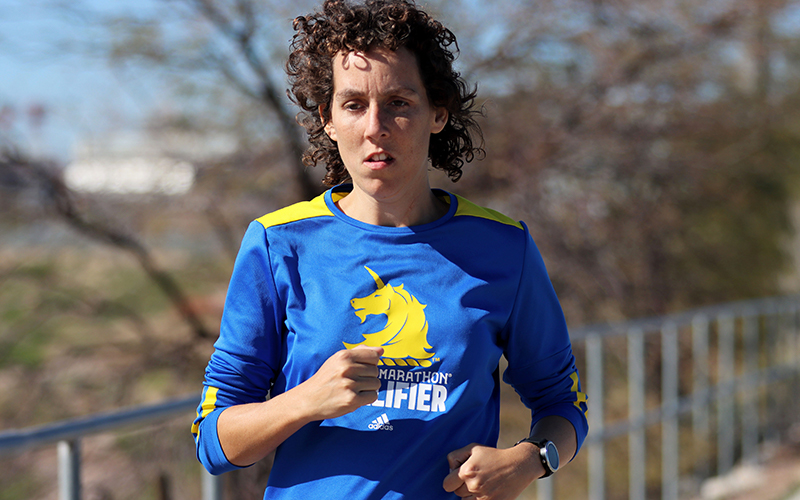PHOENIX – In his first three years of college, Ignazio Macaluso, a chemical engineering major at Arizona State, felt there was little support provided to students who, like him, live with autism.
The engineering field, with its emphasis on group activities and labs, proved especially challenging, said Macaluso, 22, a senior who’s scheduled to graduate in December.
“Just trying to cater to others, especially neurotypical methods of processing things and performing certain tasks, has definitely required a lot of patience and encouraged growth on my part,” he said.
That experience prompted Macaluso to find a way to help others. He now serves as curriculum developer for Employment Assistance and Social Engagement, a new program that provides peer support for ASU engineering students with autism spectrum disorder.
“I wanted to provide what I lacked or lend myself to helping provide what I lacked in high school and beyond,” he said.
The program, known as EASE, is a joint project between ASU’s Fulton Schools of Engineering and the College of Health Solutions.
It began after Deana Delp, a lecturer in the engineering school, noticed an uptick of students on the spectrum in her classes. She reached out to Maria Dixon, a College of Health Solutions clinical professor who serves as faculty adviser to a campus-wide group for those with autism.
EASE includes peer mentoring to help engineering students succeed while at ASU, as well as skills to prepare them for a career.
“The ultimate goal is once they graduate to be able to find a job that matches with what they studied,” Delp said.
Research shows about 49,000 people with autism spectrum disorder finish high school every year in the U.S., and about 16,000 of those students go on to higher education. Further studies show that college students with autism are more likely to gravitate toward engineering and other STEM majors.
However, many college students with autism fail to graduate, according to a 2018 study in the Journal of Autism and Developmental Disorders. Although academic needs are met, it said, social support is lacking, and college life may trigger mental health issues for some.
At ASU, about 300 students with autism have registered with Student Accessibility and Inclusive Learning Services, but there are more students with autism who may not have registered for accommodations. Of those 300, 70 are studying engineering.
Dixon says the goal of EASE is to mentor students who enter the program each semester until they start internships and graduate.
Delp and Dixon both noticed the college experience offers fewer accommodations for students on the spectrum compared with those provided in middle schools and high schools.
“When you come to college, interacting with your professors is really different,” Dixon said. “A lot of the goals had to do with managing formal language versus informal language and being able to organize and use some executive functioning skills.”
College also presents challenges associated with independence and work management.
“You can have a teacher in high school or middle school that’s specifically outlining your assignments and really staying on top of that,” Delp said. “They may even communicate with the parents as to what to do and when it’s due, whereas in college that’s not there.”
In EASE, each student works with two mentors – one from the engineering school to provide guidance on coursework and another from the College of Health Solutions’ speech and hearing department.
For Macaluso, the program seemed a clear way to help other students receive the kind of support he never received. His team reviews majors with students and determines the best course of action for succeeding.
The program currently has five students with autism and two peer mentors. Despite being in its pilot stage since 2020, Dixon has a vision for how the program can evolve.
“Off in the distance we have our eyes set on helping more students than just in the engineering program,” she said.
Delp said she’d like to see the program expand to focus on finding employment for students. The unemployment rate for college grads with autism is 85%, according to the Autism Society.
Through the program, Macaluso said, there’s greater awareness that students on the spectrum have a variety of experiences and traits and that there isn’t a simple solution to meet the needs of all.
“A lot of the times people try to apply a general algorithm almost to dealing with individuals on the spectrum. But that’s what they are – they are individuals. Each one is unique and has different experiences and traits,” Macaluso said. “Just being involved in their path to acclimation has been very helpful to me.”



